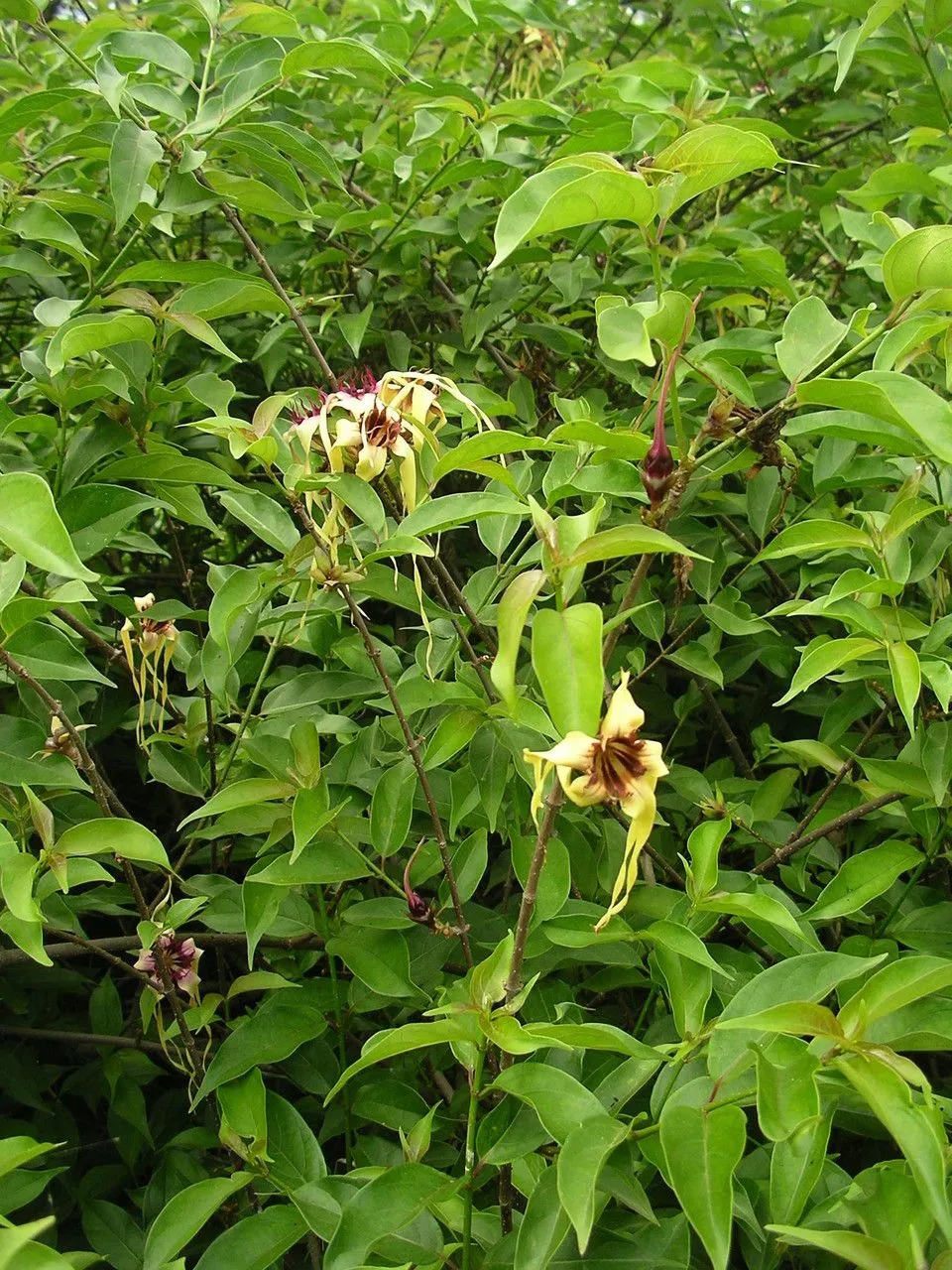
Author: DC.
Bibliography: Bull. Sci. Soc. Philom. Paris 3: 123 (1802)
Year: 1802
Status: accepted
Rank: species
Genus: Strophanthus
Vegetable: False
Observations: W. Trop. Africa to Uganda and NW. Angola
Poison arrowvine, scientifically known as Strophanthus sarmentosus, is a fascinating and notable plant species within the Apocynaceae family. First formally described in the early 19th century (Bull. Sci. Soc. Philom. Paris 3: 123, 1802) by the author DC., this plant has captured the interest of botanists and traditional medicine practitioners alike.
Originating from the lush regions of Western Tropical Africa, Poison arrowvine extends its reach eastward to Uganda and southward into northwest Angola. Its native habitat is characterized by warm, humid conditions typical of tropical flora, and it thrives in such environments thanks to its climbing nature and robust growth habits.
One of the most intriguing aspects of Strophanthus sarmentosus is its unique chemical properties. Traditionally, indigenous peoples have harnessed extracts from this vine for use in arrow poison, lending it the common name, Poison arrowvine. The plant contains potent cardiac glycosides that, when carefully prepared, serve as powerful toxins. However, these same compounds have also been studied for their potential medicinal applications, particularly in the treatment of certain heart conditions, showcasing the plant’s complex duality as both a poison and a remedy.
Visually, Poison arrowvine is an attractive plant, often featuring vibrant flowers that add to its allure, yet belie its toxic capabilities. The beauty of its flowers contrasts sharply with its potential danger, further intriguing those who study or happen upon it in its natural environment.
Understanding Poison arrowvine is essential for those in fields such as ethnobotany, toxicology, and pharmacology. Its role in traditional practices and potential modern medical applications make it an important subject of ongoing research.
To those traversing the regions from Western Tropical Africa to Uganda and northwest Angola, awareness of Strophanthus sarmentosus is crucial, ensuring appreciation and respect for its potent properties. This plant, with its unique chemistry and historical significance, continues to be a topic of interest and study, demonstrating the delicate balance between nature’s beauty and its potential perils.
Eng: arrow-poison, poison arrowvine, spider-tresses
En: Poison arrowvine, Arrow-poison, Spider-tresses, Strophanthus
Bm: Kuna
Zh: 西非羊角拗
Taken May 7, 2014 by Tela Botanica − Sénégal ENGOUEMENT (cc-by-sa)
Taken Dec 1, 2019 by Tela Botanica − Sylvain Piry (cc-by-sa)
Taken Dec 1, 2019 by Tela Botanica − Sylvain Piry (cc-by-sa)
Taken May 8, 2014 by Tela Botanica − Sénégal ENGOUEMENT (cc-by-sa)
Taken Mar 20, 2014 by Tela Botanica − Samantha BAZAN (cc-by-sa)
Taken Mar 6, 2020 by Marc Rossi (cc-by-sa)
Taken Mar 6, 2020 by Marc Rossi (cc-by-sa)
Taken Jan 12, 2011 by Tela Botanica − Florian FRAIX-BAVUZ (cc-by-sa)
Taken May 31, 2017 by Tela Botanica − Lisa MORENO (cc-by-sa)
Taken Mar 20, 2014 by Tela Botanica − Samantha BAZAN (cc-by-sa)
Taken Jun 11, 2022 by Birgitta Tittel (cc-by-sa)
Taken Sep 18, 2022 by ruri prasetyowati (cc-by-sa)
Taken Dec 1, 2019 by Tela Botanica − Sylvain Piry (cc-by-sa)
Taken Dec 1, 2019 by Tela Botanica − Sylvain Piry (cc-by-sa)
Taken May 6, 2014 by Tela Botanica − Sénégal ENGOUEMENT (cc-by-sa)
Taken Dec 1, 2019 by Tela Botanica − Sylvain Piry (cc-by-sa)
Taken May 6, 2014 by Tela Botanica − Sénégal ENGOUEMENT (cc-by-sa)
Taken May 31, 2017 by Tela Botanica − Lisa MORENO (cc-by-sa)
Taken Aug 11, 2010 by Tela Botanica − Sylvain PIRY (cc-by-sa)
Taken Aug 11, 2010 by Tela Botanica − Sylvain PIRY (cc-by-sa)
Taken Aug 11, 2010 by Tela Botanica − Sylvain PIRY (cc-by-sa)
Taken Aug 11, 2010 by Tela Botanica − Sylvain PIRY (cc-by-sa)
Taken May 6, 2014 by Tela Botanica − Sénégal ENGOUEMENT (cc-by-sa)
Taken May 6, 2014 by Tela Botanica − Sénégal ENGOUEMENT (cc-by-sa)
© copyright of the Board of Trustees of the Royal Botanic Gardens, Kew.
© copyright of the Board of Trustees of the Royal Botanic Gardens, Kew.
© copyright of the Board of Trustees of the Royal Botanic Gardens, Kew.
Family: Myrtaceae Author: (F.Muell.) K.D.Hill & L.A.S.Johnson Bibliography: Telopea 6: 402 (1995) Year: 1995 Status:…
Family: Rubiaceae Author: Pierre ex A.Froehner Bibliography: Notizbl. Bot. Gart. Berlin-Dahlem 1: 237 (1897) Year:…
Family: Sapindaceae Author: Koidz. Bibliography: J. Coll. Sci. Imp. Univ. Tokyo 32(1): 38 (1911) Year:…
Family: Asteraceae Author: A.Gray Bibliography: Pacif. Railr. Rep.: 107 (1857) Year: 1857 Status: accepted Rank:…
Family: Fabaceae Author: Medik. Bibliography: Vorles. Churpfälz. Phys.-Ökon. Ges. 2: 398 (1787) Year: 1787 Status:…
Family: Aspleniaceae Author: (Cav.) Alston Bibliography: Bull. Misc. Inform. Kew 1932: 309 (1932) Year: 1932…